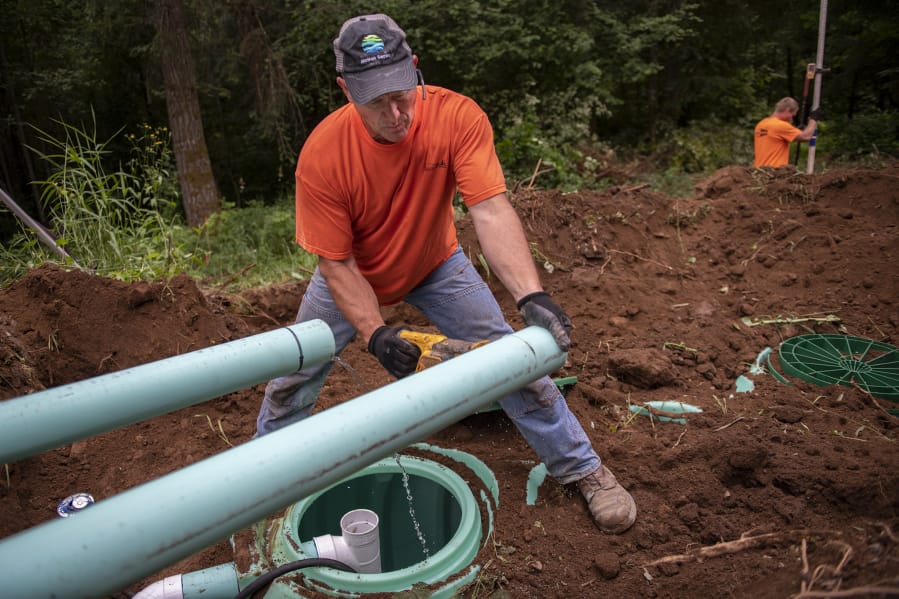AMBOY — The scene at a rural Amboy property last week looked like it could have been an archaeological excavation.
A patch of land to the side of a large garage was carefully unearthed, with tangled roots and worms exposed. But three employees of Bloomquist Septic Inspections certainly weren’t looking for any treasures.
They were digging to install a receptacle and drainage system for human waste — a septic system, which accounts for the most common wastewater treatment system used in rural and unsewered areas of the county. According to a 2017 Columbian story, there are around 33,500 septic systems in Clark County. By law, and common sense, they require routine maintenance, and indeed, it’s not exactly pretty.
Dirty job
“What’s your definition of gross? Getting in your mouth, getting in your eyes? It’s all been there,” longtime septic worker Pete Roberts said with a laugh.




